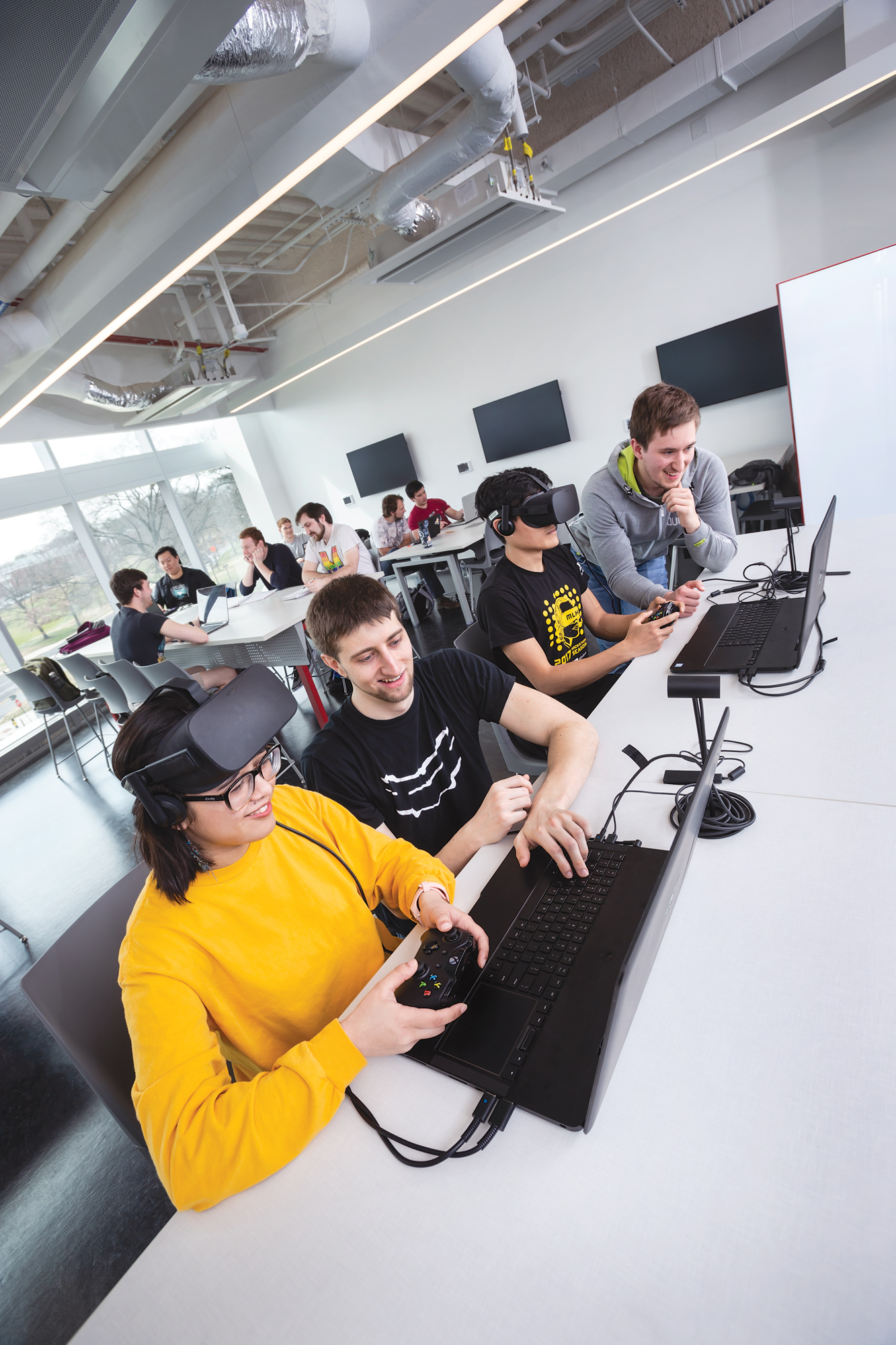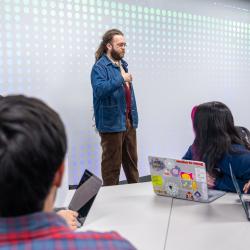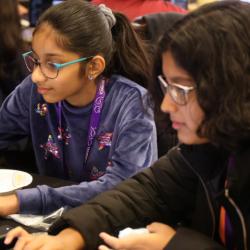Cultivating Leadership

University of Maryland computer science major Galen Stetsyuk and alumnus Mikhail Sorokin (B.S. '18, computer science) aspire to be leaders in the field of virtual reality (VR), and they're well on their way. As founders of the company MPLEX VR, they are developing a set of best practices for VR and sharing their experiences with classmates through the university's XR Club for VR and augmented reality. This spring, they put that experience into practice by developing and teaching the course CMSC388G: "Special Topics in Computer Science: Virtual Reality Game Development."
Their course is part of a campus program called Student Initiated Courses (STICs), where students design and teach courses to their peers. Stetsyuk and Sorokin were able to turn their expertise into a formal class with help from the inaugural Andrew Reisse Endowed Teaching Award, which supports undergraduates teaching STICs in the sciences.
"The field of VR is so new that we're sort of developing these best practices as we go," Stetsyuk said, adding that this is the beauty of the STICs program. "Student-taught courses explore a lot more at the edge of our knowledge than traditional courses. We're teaching things that we know and also encouraging students to try new things and see how they work. That approach lets students know that not everything is known yet. I think that's very beneficial for students who are looking to invent new technologies."
The course addresses some of VR's biggest challenges, such as techniques to reduce simulation-induced motion sickness and render certain materials like smoke or fire in VR.
"Just because certain materials look cool in a regular game doesn't mean they will work in VR," Sorokin said. "You have to balance what you think will look cool with what actually works."
Improving the VR experience is the focus of their company, as well as the class. If successful, they believe VR will quickly become mainstream. "
With improvements to the immersive experience, VR could fundamentally change the landscape of all of entertainment, and our goal is to be among the leaders in that," Stetsyuk said.
Their entrepreneurial spirit and conviction echo the life of the man for whom their teaching award was named. The award was created by Robert Reisse (M.S. '70 and Ph.D. '76, physics) and his wife, Dana (M.L.S. '73, library and information services), in memory of their son, Andrew Reisse (B.S. '01, computer science and mathematics). Co-founder and lead engineer of Oculus, Andrew Reisse launched his first startup as a 19-year-old college student with his friends Michael Antonov and Brendan Iribe. Tragically, in 2013, Reisse was killed in a hit-and-run accident. A passionate hiker and landscape photographer, as well as a natural mentor who inspired others around him, Andrew Reisse's legacy will live on in the gifts that carry his name. They include the rooftop garden and art gallery in the Brendan Iribe Center, the Andrew Reisse Memorial Scholarship in Computer Science, and the endowment for student-led classes.
"I've been so impressed with the students we met who were teaching through the STICs program," said Dana Reisse. "I think it's very important to support students who are willing to take the time and effort to teach a class to their peers."
Written by Kimbra Cutlip
See also:
- Opening a Door to Tomorrow: The Brendan Iribe Center for Computer Science and Engineering projects the university's future
- Turning Ideas Into Reality: Jagdeep Singh Family Makerspace offers hands-on experiences beyond the classroom
- Creating a Sense of Community: New initiative Expands inclusion and diversity in computer science at UMD
- Building a Hub for Tech Leaders: Donor support funds eight new endowed faculty positions in the Department of Computer Science
- Driving Research Advances: Students and faculty members tackle global-scale problems and challenges of everyday life
- Our Generous Donors: Thank you to the people who made the Brendan Iribe Center possible
This article was published in the Spring 2019 issue of Odyssey magazine. To read other stories from that issue, please visit go.umd.edu/odyssey.







